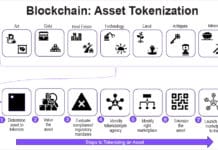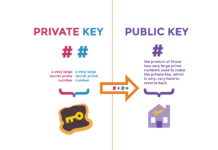Kubernetes is an open source container orchestration platform that automates the deployment, scaling, and management of containerised applications. Its benefits are manifold.
In software development, Kubernetes stands as a game-changer, redefining how applications are deployed and managed. As organisations adopt cloud-native approaches, understanding the significance of Kubernetes becomes essential for all stakeholders.
What is Kubernetes?
Kubernetes, often abbreviated as K8s, is an open source container orchestration platform designed to automate the deployment, scaling, and management of containerised applications. Originally developed by Google, Kubernetes is now widely adopted and maintained by the Cloud Native Computing Foundation (CNCF). It provides a robust and flexible framework for orchestrating containers, enabling seamless management of applications in various environments.
Key features of Kubernetes
Container orchestration: Kubernetes excels at managing containerised applications, enabling developers to deploy and scale containers seamlessly. It automates tasks such as load balancing, self-healing, and rolling updates, simplifying the operational aspects of containerised environments.
Scalability: Kubernetes supports automatic scaling of applications based on resource utilisation or custom metrics. This ensures that applications can handle varying workloads efficiently by dynamically adjusting the number of running containers.
High availability: Kubernetes enhances the reliability of applications by distributing containers across multiple nodes in a cluster. This ensures that if one node fails, the application can continue running on other nodes, providing high availability.
Portability: Kubernetes promotes a consistent deployment and management experience across various infrastructure providers, whether on-premise, in the cloud, or hybrid environments. This portability simplifies the migration of applications between different platforms.
Declarative configuration: Users define the desired state of their applications and infrastructure using YAML or JSON files. Kubernetes then continuously works to ensure that the current state matches the declared state, simplifying configuration management.
Core components of Kubernetes
The architecture of Kubernetes is designed to be highly modular and scalable. Here are the main components divided into
logical parts.
Control plane components
kube-apiserver:
- Acts as the central management entity for the Kubernetes cluster.
- Exposes the Kubernetes API, which is used by users, administrators, and other components to interact with the cluster.
etcd:
- Consistent and highly available key-value store used as the Kubernetes cluster’s backing store for all cluster data.
- Stores configuration data, state information, and metadata.
kube-scheduler:
- Watches for newly created pods with no assigned node and selects a node for them to run on.
- Considers factors like resource requirements, hardware or software constraints, affinity and anti-affinity specifications, data locality, and more.
kube-controller-manager:
- Runs controller processes to regulate the state of the system.
- Controllers manage different aspects of the cluster, such as nodes, replication, endpoints, and more.
cloud-controller-manager:
- Extends the functionality of the cluster by integrating with cloud provider APIs.
- Manages external cloud services like load balancers, storage volumes, and networking.
Node components
kubelet:
- Acts as an agent running on each node in the cluster.
- Ensures that containers are running in a pod.
kube-proxy:
- Maintains network rules on nodes.
- Enables communication across pods in a cluster.
Container runtime:
- Responsible for pulling and running container images.
- Kubernetes supports multiple container runtimes, such as Docker, containerd, and others.
Add-ons
DNS server (kube-dns or CoreDNS):
- Provides DNS-based service discovery for services within the cluster.
Dashboard:
- Web-based user interface for managing and monitoring the cluster.
Ingress controller:
- Manages external access to services within a cluster, typically handling load balancing, SSL termination, and routing.
Heapster (optional, deprecated):
- Collects and interprets cluster-wide node and pod resource usage data.
Prometheus/Grafana (monitoring):
- Tools for monitoring the health and performance of the cluster.
Fluentd/ELK Stack (logging):
- Manages and collects logs from the various components in the cluster.
CNI plugins:
- Container network interface (CNI) plugins enable pod-to-pod communication and networking.
The deployment of core components
Pods: In container orchestration, a pod is the smallest deployable unit. It is the basic building block and represents a single instance of a running process in a cluster. However, unlike traditional standalone containers, pods can contain one or more containers that share the same network name space and storage, and have the capability to communicate with each other using localhost. This enables tightly coupled applications to run together in the same pod.
Nodes: Nodes are individual machines (virtual or physical) in a cluster that run your applications. Each node is responsible for running pods and providing the necessary runtime environment, including containers, necessary libraries, and other resources. They communicate with the control plane and are the workhorses of the cluster, executing the tasks assigned to them.
Clusters: A cluster is a collection of nodes that work together to run containerised applications. It includes the control plane, which manages and monitors the cluster, and the nodes, where the applications run. Clusters provide the infrastructure needed to deploy, scale, and manage containerised applications effectively. They offer high availability and reliability by distributing workloads across multiple nodes.
Deployments: Deployments are a higher-level abstraction that enables declarative updates to applications. They allow you to describe the desired state for your application, such as the number of replicas (pod instances) and the desired pod template. The deployment controller then takes care of creating, updating, and scaling the pods to match the desired state. Deployments make it easy to manage the rollout of new features, updates, or rollbacks in a controlled and automated manner.
Why use Kubernetes?
Kubernetes has become the de facto standard for container orchestration. It provides a robust and scalable platform for deploying, managing, and scaling containerised applications. Kubernetes brings order and efficiency to the complex task of container orchestration, enabling organisations to harness the full potential of container technology.
Challenges in traditional deployment
In traditional deployment models, managing and scaling applications can be a daunting task, including challenges like:
Manual scaling: Scaling applications manually is time-consuming and prone to errors. Traditional methods may involve adding or removing servers, leading to potential downtime and inefficiencies.
Resource allocation: Allocating resources efficiently is challenging. Applications may not utilise resources optimally, leading to over-provisioning or underutilisation of resources.
Dependency management: Applications often have dependencies on specific runtime environments and libraries. Ensuring consistency across different environments can be a significant challenge.
Fault tolerance: Handling hardware or software failures in a seamless manner is complex. Ensuring high availability and fault tolerance often requires intricate configurations and redundant infrastructure.
The challenges Kubernetes addresses
Container orchestration: Kubernetes automates the deployment, scaling, and management of containerised applications. It abstracts away the underlying infrastructure, providing a consistent environment for applications to run across different environments.
Declarative configuration: Kubernetes allows users to declare the desired state of their applications and infrastructure. The system then works to ensure that the actual state matches the declared state, minimising manual interventions and reducing the likelihood of configuration drift.
Auto-scaling: Kubernetes can automatically scale applications based on predefined metrics or user-defined policies. This ensures optimal resource utilisation and responsiveness to changing workloads.
Service discovery and load balancing: Kubernetes provides built-in mechanisms for service discovery and load balancing. This simplifies communication between different parts of an application and ensures even distribution of traffic.
Rolling updates and rollbacks: Kubernetes supports rolling updates, allowing seamless deployment of new versions without downtime. In case of issues, rollbacks can be executed quickly and reliably.
Benefits of Kubernetes
Scalability: Kubernetes enables horizontal scaling, allowing applications to handle increased load by adding more instances. This ensures optimal utilisation of resources and improved performance.
Automation: Automation is at the core of Kubernetes. Tasks like scaling, updates, and deployments can be automated, reducing manual intervention and the likelihood of human error.
Resource optimisation: Kubernetes optimises resource allocation, ensuring that applications get the resources they need and avoiding over-provisioning, which can lead to unnecessary costs.
Fault tolerance: Kubernetes provides built-in fault tolerance through automated health checks, automatic restarts, and the ability to reschedule failed containers on healthy nodes.
Where to use Kubernetes
Kubernetes’ versatility and scalability make it a preferred choice for various industries and applications. There are diverse scenarios where Kubernetes proves to be indispensable.
Microservices architectures: Kubernetes excels in managing microservices-based applications, where components are decoupled and independently deployable. It streamlines the deployment, scaling, and monitoring of microservices, ensuring seamless orchestration.
Containerised web applications: Web applications often comprise multiple components that can be containerised. Kubernetes simplifies the management of these containers, providing an efficient way to deploy, scale, and update web applications.
Stateless and stateful applications: Whether your application is stateless or requires persistent storage, Kubernetes can handle both. StatefulSets in Kubernetes enable the deployment of stateful applications, making it a versatile solution for a wide range of use cases.
Continuous integration and continuous deployment (CI/CD): Kubernetes integrates seamlessly with CI/CD pipelines, automating the deployment process. This ensures a faster and more reliable delivery of software updates, enhancing the agility of development teams.
Machine learning and data processing: Kubernetes is increasingly being used to orchestrate machine learning workflows and data processing pipelines. Its ability to scale resources dynamically makes it well-suited for handling the computational demands of these workloads.
In conclusion, Kubernetes’ transformative capabilities offer a unique opportunity to optimise projects. This encourages developers to explore and implement Kubernetes, leveraging its scalability, efficiency, and streamlined deployment processes. As developers navigate the evolving landscape of modern technology, adopting Kubernetes is not just a choice; it’s a strategic move towards unlocking innovation and operational excellence in developers’ projects.













































































